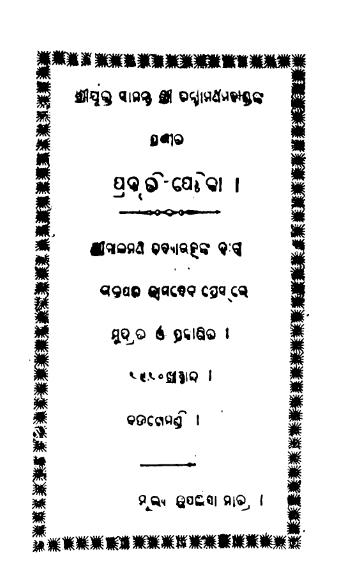Published in 1910, Prakruti Petika stands as a significant contribution to Odia poetry, crafted by the esteemed poet Chintamani Mohanty. This collection, which translates to “The Nature’s Notebook,” reflects the poet’s deep appreciation for the natural world and its intricate connection to human experience. Mohanty’s verses celebrate the beauty and richness of nature while also invoking profound philosophical reflections on life, existence, and the environment.
The early 20th century was a transformative period in India, marked by a burgeoning sense of cultural pride and social awakening. Amongst various artistic expressions, literature flourished as a means for individuals to explore and articulate their connection to both their heritage and the rapidly changing world around them. Prakruti Petika emerged during this vibrant era, showcasing Mohanty’s ability to intertwine personal introspection with a broader commentary on the role of nature in human life.
The work is particularly significant as it speaks to the growing awareness of environmental issues, a topic that, although more prominent in modern discourse, has roots in earlier literary traditions. Mohanty’s focus on nature encapsulates a philosophical perspective that elevates the natural world as not just a backdrop for humanity, but as a vital and dynamic participant in the human experience.
In Prakruti Petika, Mohanty delves into a variety of themes centered around nature and its relationship with humanity. The poems evoke the splendor of landscapes, the changing seasons, and the myriad forms of life that inhabit the earth. Through vivid imagery and sensory language, the poet invites readers into a world where nature’s beauty is celebrated and revered.
One prevalent theme in the collection is the interconnectedness of life. Mohanty portrays nature as a living entity, reflecting the harmony and balance necessary for a fulfilling existence. He draws parallels between natural phenomena and human emotions, suggesting that just as the seasons change, so too do our experiences, joys, and sorrows.
Furthermore, Prakruti Petika embodies a sense of reverence for the environment, encouraging readers to reflect on their own relationship with the natural world. Mohanty’s appreciation for flora and fauna underscores the idea that nature is both a source of inspiration and a sanctuary for contemplation, urging humanity to live in harmony with their surroundings.
Chintamani Mohanty’s poetic style in Prakruti Petika is marked by its lyrical elegance and rhythmic beauty. His adept use of traditional Odia poetic forms results in verses that flow melodically, capturing the reader’s attention and evoking an emotional response. The poet skillfully employs metaphors and similes, enriching the text with vivid imagery that brings nature to life.
The themes of light and shadow, growth and decay, are intricately woven into Mohanty’s poems, creating a rich tapestry of experiences that resonate with readers. His use of nature as a metaphor for human emotions provides a profound insight into the universal aspects of life.
Prakruti Petika has left an indelible mark on Odia literature, celebrating the beauty of nature and the interconnectedness of all living things. Mohanty’s work has inspired contemporary poets and writers to explore similar themes, fostering a deeper understanding of environmental consciousness within the realm of literature.
Books Info
| Books name | Prakruti Petika / ପ୍ରକୃତି ପେଟିକା |
| Author | Chintamani Mohanty |
| No Of pages | 29 |
| Publisher | NA |
| Publication | 1910 |
| Printed At | Gajapati Bhimadeba Press |
| Distributor | NA |

